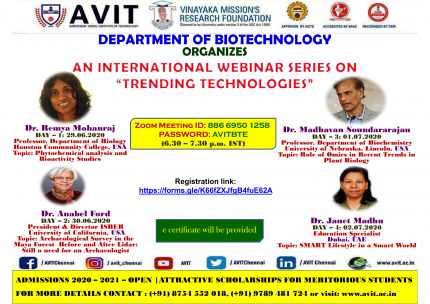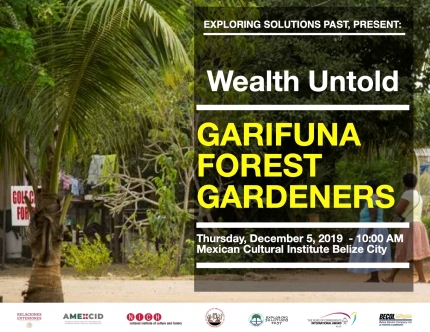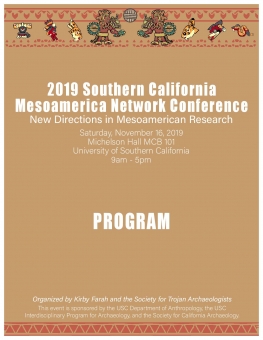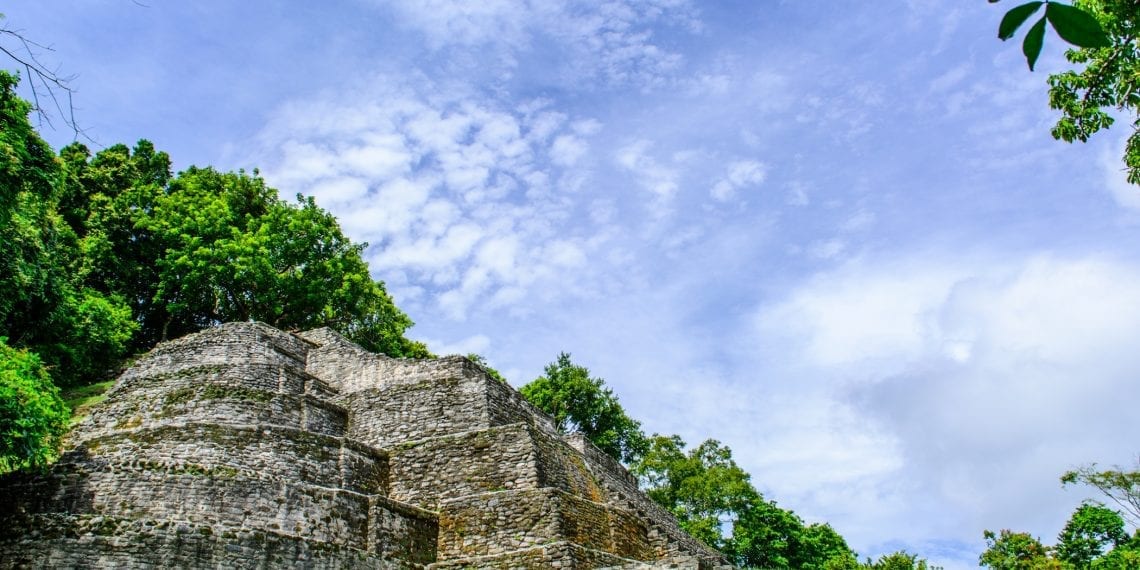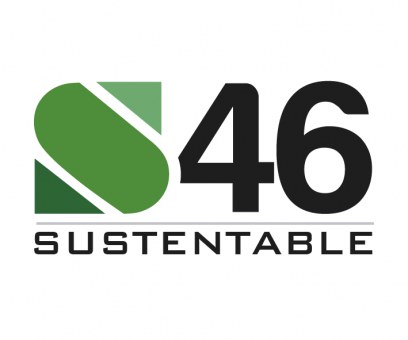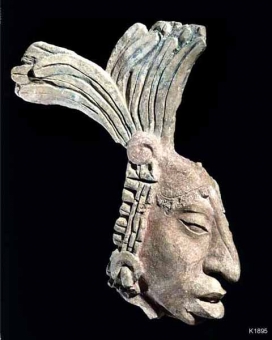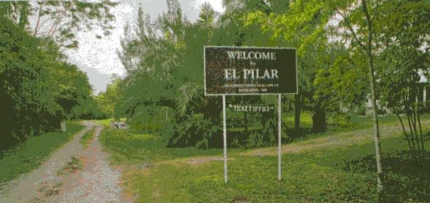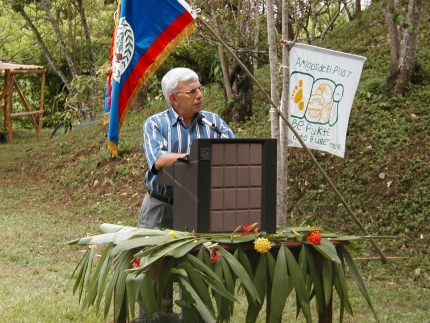News + Events

UCSB’s Chancellor, Henry Yang, will bestow the university’s top medal upon Narciso Torres, a Maya forest gardener and longtime collaborator with archaeologist Anabel Ford who will receive the Chancellor’s Award on January 12. Chancellor Yang is highlighting the importance of different ways of knowing and seeing,” explains Ford, who’s built a legendary career around her discoveries at El Pilar in western Belize.
Articles:
The UC Santa Barbara Chancellor's Medal by Voice Magazine

The Morning Show invites Master Forest Gardener, Narcisso Torres, and Anabel Ford to talk about Narcisso being awarded by UCSB for the highest forthcoming award.
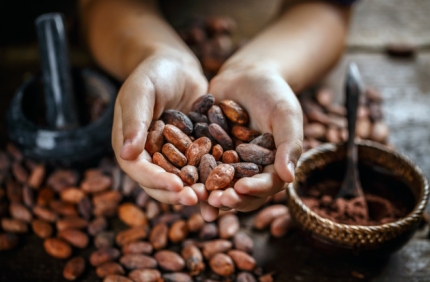
New study suggests cacao was not limited to the elite in ancient Mesoamerica, as prior research has indicated.
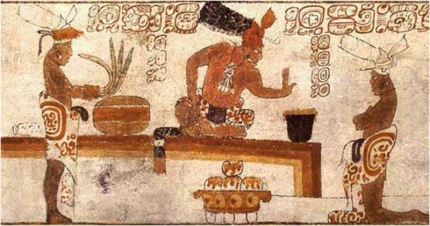
Among ancient Mayas, cacao was not a food exclusive to the elite, but was important — and common — to all.
A new study by UC Santa Barbara researchers Anabel Ford and Mattanjah de Vries asks these questions — and answers them — by examining cacao residues from ancient ceramics. Their results, published in the Proceedings of the National Academy of Sciences, demonstrate that cacao was, in fact, accessible to the general populace and was used in celebrations at all levels of society.

Anabel Ford first encountered the ancient Maya settlement of El Pilar, which straddles the border between Guatemala and Belize, in 1983, and she has been working at the site ever since. El Pilar was filled with plazas, temples, and palaces, which were built from 800 BC to 1000 AD.

In a new partnership, in the spirit of regenerative agriculture, and with respect to the ancient Maya Milpa farming cycle, RegeNErate Nebraska is bringing you a special opportunity to grow your own Milpa garden.
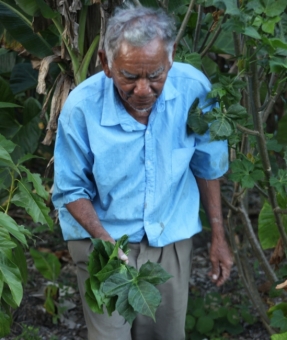
The ancient Maya ate well, blessed as they were with forests teeming with edible plants, insects and game. Isotope analysis of collagen of human bones has led researchers to infer that the Maya consumed significant amounts of maize for carbohydrates and white-tailed deer for protein.
La investigación de Anabel Ford se centra en los antiguos mayas y el bosque tropical de Belice, Guatemala y México. Su trabajo de campo y de laboratorio se han enfocado a la zona superior del río Belice y El Pilar. Para investigar el desarrollo de la complejidad y el cambio en el uso de la tierra la dra.

The cultivable landscape of the ancient Maya flourished in the shallow friable soils of the limestone uplands, avoiding soils that the conventional Western agricultural systems deem arable not recognizing the cultivable lands that do not use plows.

Los mayas desarrollaron una agricultura sofisticada y sustentable a largo plazo. La milpa y el jardín forestal proveyó todas las necesidades de vida, desde las alimenticias hasta las utilitarias y medicinales. Únete a nuestro #fblivestream para charlas sobre este tema con los doctores Trabanino, Ford y Varela.
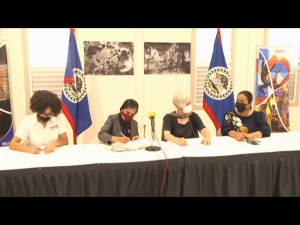
NICH is bringing archaeology into the national museum and district houses of culture. The history of the Maya people, coupled with the benefits of forest gardening from a climate change standpoint, will be featured at the museum.
Although Dr. Anabel Ford was able to coordinate future field research and assist with exhibits on El Pilar and forest gardens, she departed early due to her husband's medical emergency as seen on https://www.facebook.com/watch/?v=133964765468091.

The National Institute of Culture and History (NICH) and the Exploring Solutions Past -The Maya Forest Alliance today signed a Memorandum of Understanding for the development of a Museum Exhibition showcasing the Forest Gardens and the Maya of El Pilar. The exhibition will symbolize the need for action as it relates to climate change and will show how to reduce temperature, maintain biodiversity, conserve water and build soil fertility.
Advocate for the Mayan monument Dr. Anabel Ford and her team signed a memorandum of understanding (M.O.U.) with NICH to develop comprehensive and appealing exhibits aimed at teaching the public about climate and food security solutions from the past that seems tailor-made for the needs of the future.
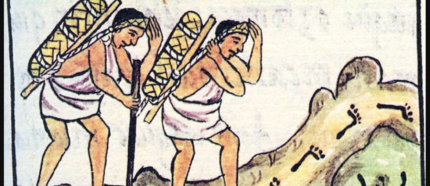
The environmental legacy of the ancient Maya is a controversial topic. Since at least the 19th Century, when widely published travelogues began revealing the wondrous monuments of Maya cities to Euro-American audiences, Western popular imagination has been captivated by Maya civilization, and especially tales of its demise.
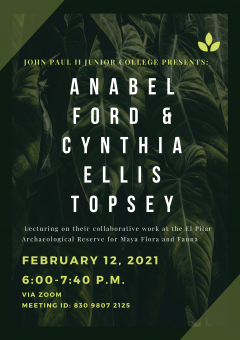
Anabel Ford and Cynthia Ellis Topsey lecture about their collaborative work at the El Pilar Archaeological Reserve for may Flora and Fauna
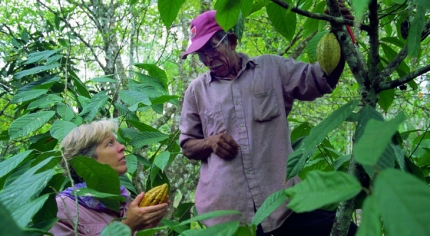
UCSB Professor Anabel Ford offered the Humanist Society a history of Maya Forest agriculture that continues to this day. And that can teach us lessons to use in sustainability in our modern world.
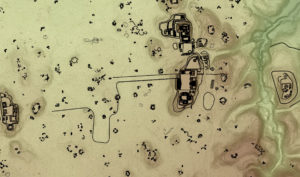
How LiDAR technology and traditional knowledge are converging to reveal the extent and complexity of ancient Maya settlement at El Pilar.

Scientists are now seeing, more than ever, what the ancient Maya created beyond the more visible monumental structures everyone sees today.
Archaeological projects are in a special position to create unique partnerships, with shared goals and intentions, to development Maya anthropological archaeology. This narrative presents an education outreach project in archaeology invigorated with local collaboration.
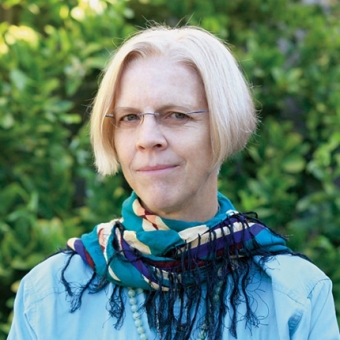
Dr. Anabel Ford, research anthropologist and director of the UCSB MesoAmerican Research Center, has dedicated her career to documenting and preserving the ancient Maya city of El Pilar. Recently, a new grant award by the National Science Foundation will allow Dr. Ford and her team to conduct research into how the Maya built their ancient settlements.
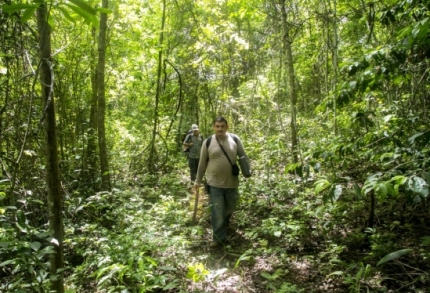
Archaeologist Anabel Ford receives NSF grant to cover comprehensive work at Maya site El Pilar in Belize.
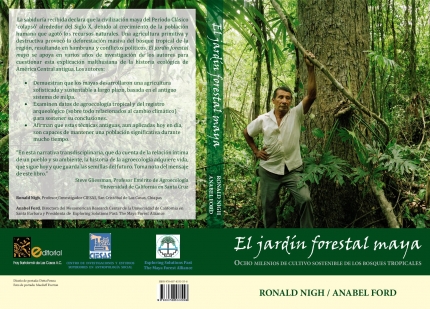
We are celebrating the announcement of our new Spanish translation of our book
and invite all to the event at La Casa del Pan in San Cristobal Las Casas, Chiapas,
Mexico!
Por considerarlo de su posible interés, me resulta grato enviar a usted
una atenta invitación para atender la presentación del libro El Jardin Forestal Maya: Ocho Milenios de Cultivo Sostenido de los BosquesTropicales
Ronald Nigh/Anabel Ford
Comentan:
Dra Alma Amalia Gonzales (CIMSUR)
Dr Gilles Polian (CIESAS Sureste)
Dr Peter Rosset (ECOSUR)
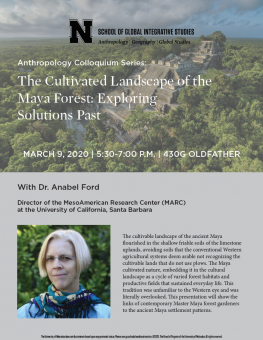
Dr. Anabel Ford joins University of Nebraska for a talk on the cultivable landscape of the ancient Maya.
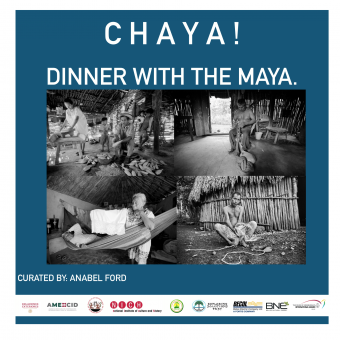
We'd like to share footage from this past weekend on the live coverage from the closing of the "Chaya Dinner With The Maya" exhibit. Thank you to everyone who came out and supported the hard work put into the exhibit.
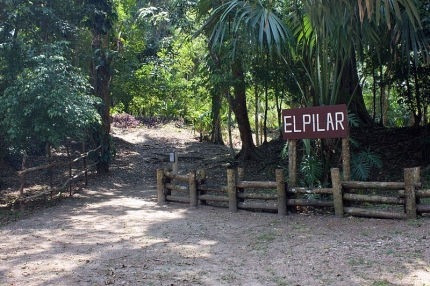
El Pilar is unique in that it is a system linked together east and west, thereby uniting one ancient Maya center in two modern nations: Guatemala and Belize. El Pilar is not merely a pyramid or a site. It is a whole region used by a community, and its size and composition suggest that it was directly related to farmland. The area was first mapped in 1983 by archaeologist Anabel Ford while studying settlement patterns in the region.
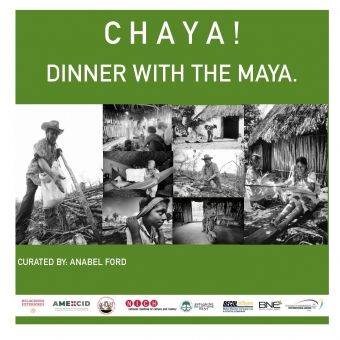
¡Chaya! Dinner with the Maya! exhibit opened 31 October 2019. It was a for a lively evening of music and education from the Maya forest of Belize! Learn about El Pilar, the useful plants of the Maya forest, and the heroes who are managing the forest as a garden. Use your imagination to reflect on our household belongings and how differences tell a cultural story.
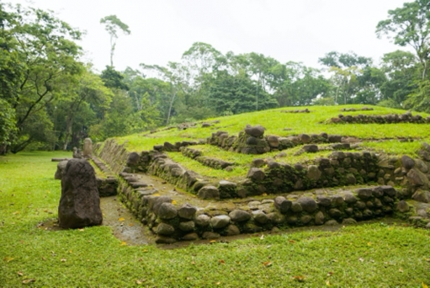
Using LiDAR technology, researchers have found a new network of canals and farmland that was used by the ancient Maya. LiDAR technology is able to get a very accurate picture of what the forest floor looks like and it has allowed geographers and archaeologists alike to find new features in the jungles where the Maya used to and continue to reside.
Dr. Anabel Ford on Exploring Solutions Past: The Maya Forest Garden as Action for Climate Change
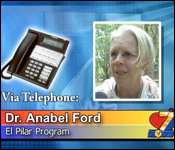
Dr. Anabel Ford and Cynthia Ellis Topsey, authors of The Maya Forest Garden talk about the importance of the mayan forest and the gardeners who help keep alive the ways of the ancient Maya. The two authors stress the importance of supporting the Maya forest gardeners in order to preserve the wider landscape around the El Pilar site.
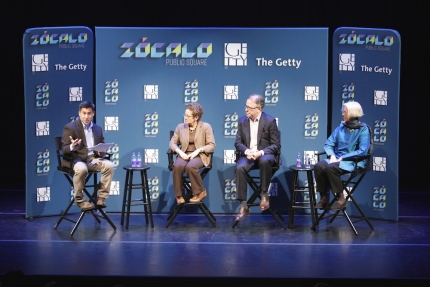
In a large panel discussion, UCSB archaeologist Anabel Ford, Princeton political scientist Melissa Lane, and Yale historian Joseph Manning engage in a discussion about sustainability in both an ancient and modern context. Drawing on the knowledge of all three panelists, a conversation between how ancient civilizations handled the challenge of being sustainable lead to a criticism of how humanity tackles the issue today.
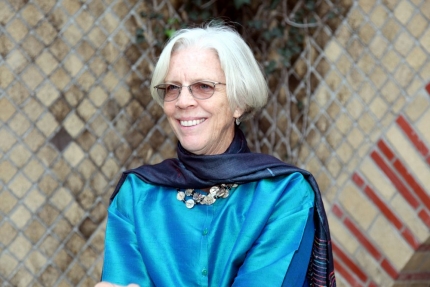
Dr. Anabel Ford sits down with Zocalo Public Square to talk about the origins of her interest in the Maya, her life abroad, and her overall experience as “a California teenager in Lebanon.”
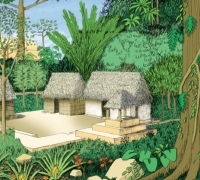
The UCSB Library will be having an exhibition inside the Art & Architecture Collection in collaboration with the MesoAmerican Research Center and the Art, Design, & Architecture Museum. The exhibition will show not only several MesoAmerican art pieces but will also compare how people live now in several situations versus how the ancient Maya lived through kitchenware comparison.
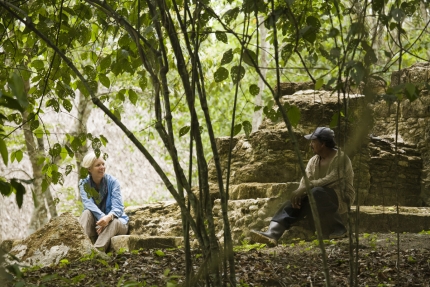
Trudging through the dense tropical forest of El Pilar, an ancient Maya city located on the Belize-Guatemala border, Dr. Anabel Ford was set on one task and one task only: finding water. Ford, who is recognized as the archaeologist who rediscovered El Pilar, knew that finding water in the Maya Forest was rare. Having led the mapping of the region, however, she also knew that there was a small stream nearby and she was determined to find it.
January 30, 2017. Nepris, www.nepris.com, a resource that connects classrooms to professionals, invited Dr. Anabel Ford to speak to a middle school class from Cleveland, Ohio. Dr. Ford was able to communicate directly with the group of middle school students through video chat and a shared PowerPoint presentation.
Monthly lecture meetings feature noted archaeologists and anthropologists who provide insight into a variety of topics. Lecture meetings are held at the Irvine Ranch Water District Community Room, 15500 Sand Canyon Avenue (between the I-5 and I-405) in Irvine, on the second Thursday of each month, at 7:30 pm. Meetings are free and open to the public.
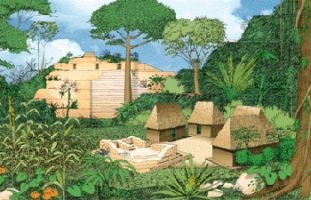
On Thursday at 12:50 in the Haag Recital Hall noted anthropological archaeologist Anabel Ford of UCSB will give a presentation of her thoughts on the topic on the collapse of Lowland Maya Civilization 1200 years ago. She will challenge current theories of the collapse that involve drought and self-caused environmental destruction. Dr.

Anabel Ford: 2000 Associate Laureate, Cultural Heritage
Archaeologist and anthropologist Anabel Ford has spent four decades studying the Maya civilization, principally at the vast and ancient city of El Pilar, which she discovered on the border of today’s Belize and Guatemala.

Experiment.com is a website dedicated to helping fund the next wave of scientific research. Bill Gates has endorsed the site saying, “This solution helps close the gap for potential and promising, but unfunded projects.” The platform is similar to the well known Kickstarter, only for funding scientific discoveries.

From the Late Pleistocene onwards our species expanded into the full diversity of the world’s environments. One of these, tropical rainforests, has traditionally been seen as a barrier to long-term human occupation and human migration.
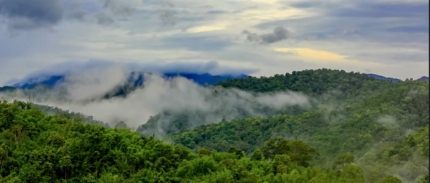
A documentary film highlighting Ford's decades-long work at the ancient city site and surrounding forest, "El Pilar: Preserving the Maya Legacy," premiered Oct. 1, at the Catalina Film Festival. The film, which received the Award of Excellence in the conservation category, can be viewed online at https://vimeo.com/163885061/cebab0ccef
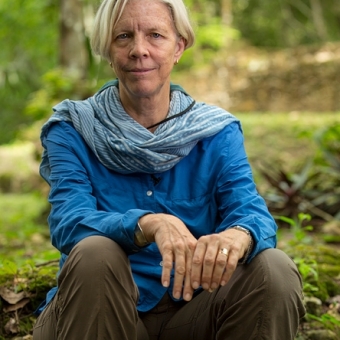
UCSB's Anabel Ford has devoted her career to conservation and research at the ancient Maya city

This article discusses the politics behind environmentalism and mentions Ford and Nigh's book throughout. Quincy Saul, of CounterPunch, presents the idea of the Maya forest garden as a solution to some of Mexico's ecological, political, and social issues.

Symposium. That's where the local and international academics converge every year for to discuss the work they've been doing along side NICH. And while the symposium had them sitting in a conference hall, their work is in the field, digging in the dirt for clues to the ancient past. But, one archaeologist's work on an ancient site is very connected to the present. That's Dr. Anabel Ford, who discovered the El Pilar Site in the early 80's and has been working there for at least three decades.

Twenty years ago, a full Katun, launched the establishment of the boundaries of the El Pilar Archaeological Reserve for Maya Flora and Fauna.
Presentation of Maya Forest Garden book at the Instituto Guatemalteco Americano.
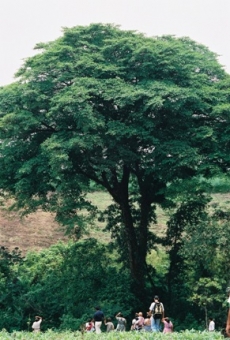
You may be wondering, “Now what is she going on about?”. Well, if you bear with me, I’d like to tell you about a revolutionary theory that proves that the Maya didn’t destroy their forest as the majority of scholars believe, but survived in an era of climate change and drought by practicing sustainable cultivation of the Maya forest for…eight millennia! Yes, eight thousand years!!
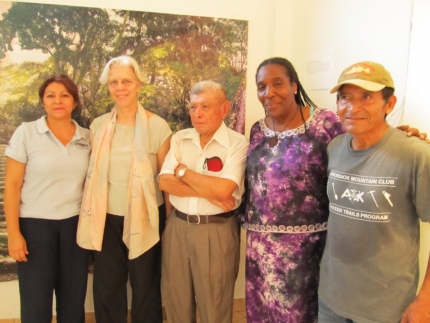
An open day on the El Pilar Maya Forest Gardens was held at the National Institute of Culture and History building on Buena Vista Street in San Ignacio Town on Wednesday of this week. The event coincides with the International Museum Day 2016, which celebrates museums and cultural landscapes around the World.
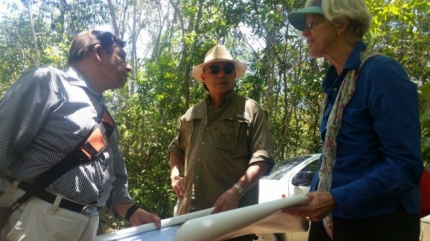
El sitio arqueológico El Pilar, ubicado en Petén, recibió la visita del Ministro de Cultura y Deportes, José Luis Chea Urruela y autoridades del Viceministerio de Patrimonio Cultural y Natural para conocer los proyectos de conservación y rescate de este lugar. El recorrido realizado hoy, contó también con la presencia de autoridades locales y periodistas de medios nacionales. La actividad estuvo guiada por la arqueóloga Anabel Ford, quien tiene a cargo el proyecto arqueológico.

Your host and Anabel Ford in her office. Archeologist who discovered the "forest gardens" of the Maya!

Today on the show we have ethnographer and author Anabel Ford, who spends her time between UCSB and El Pilar, and archeological site on the Belize-Guatamala border. El Pilar is an ancient Maya city, and in 1983 Anabel was the first archeologist to map it.
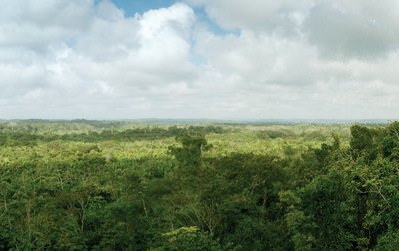
Walking through this ancient Central American jungle landscape might be a puzzling, yet surprisingly delightful experience for a first-time visitor. You don’t clearly see the well-defined, great stone pyramids, ball-courts, temples, and other monuments so often attributed to great ancient Maya centers. But you see a tropical terrain that is anything but flat. There is a jungle-shrouded mound here, another one over there. A well-planned walking path winds through what one could describe as the Maya version of the Garden of Eden.

Dynamic Rene Villanueva of Love Foundation was the Master of Ceremony that featured the work of archaeologist, Dr. Anabel Ford who has closely collaborated with Maya forest gardeners in the Cayo District over the past three decades.

With each opportunity I have to present Ronald Nigh and my new book, The Maya Forest Garden, there has been an increasing awareness of the contradictions between the exalted ancient Maya and the vilified milpa cycle.
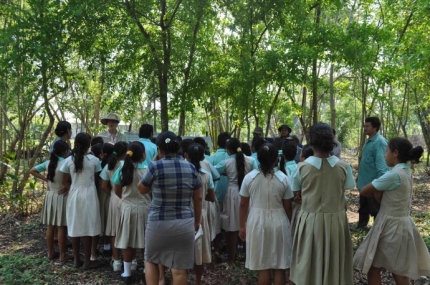
American archaeologist and anthropologist Anabel Ford has spent four decades studying the Maya civilization, principally at El Pilar, the ancient city she discovered on the border of today’s Belize and Guatemala. She also carries out research on Maya culture, which she describes as “one of the world’s greatest civilizations”, at the University of California, Santa Barbara, where she is Director of the MesoAmerican Research Center and President of the non-profit Exploring Solutions Past.
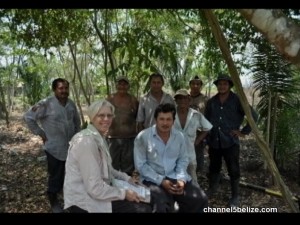
Doctor Anabel Ford is an archeologist, who having discovered El Pilar in the west, has put in at least two decades of research arguing that the Maya’s milpa cycle is one of the same with the forest. She maintains that the practice of the Mayas in cultivating ‘forest gardens’, involved sequencing an area from a closed canopy forest to an open field.
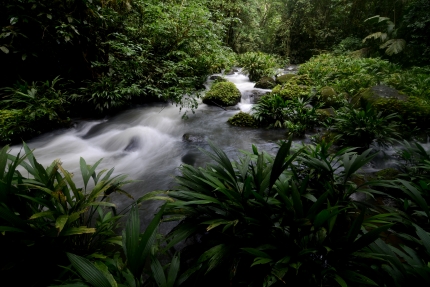
1 PM to 2 PM,
followed at 2 PM with a free docent-led tour.
San Luis Obispo Botanical Garden

Anabel Ford, Ph.D.
University of California, Santa Barbara
Monday, Jan 4 at 7:30 p.m., Fleischmann Auditorium

Chaucer’s Bookstore presents The Maya Forest Garden Book Signing With Author Anabel Ford
Chaucer’s Bookstore 3321 State Street, Santa Barbara CA 93105
Join us at 7pm
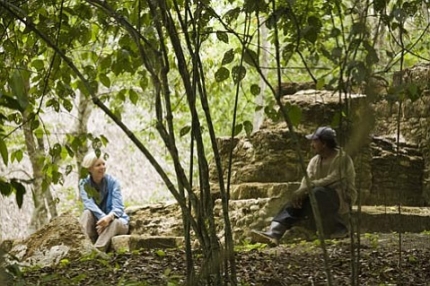
In 2001, I traveled to the Belize-Guatemala border to report on UCSB archaeologist Anabel Ford’s many discoveries at El Pilar, the Maya monument complex she uncovered in 1983.

History has not been kind to the Maya, an indigenous people of Mesoamerica. They’re usually portrayed as the hapless victims of European colonialism who collapsed and disappeared as a result of overpopulation and environmental degradation.
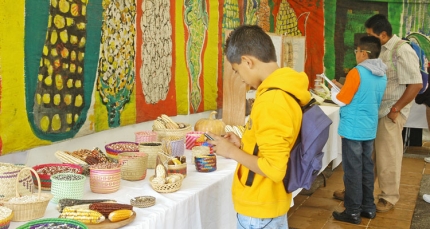
Además de domesticarlo, México dio origen al maíz y a su magnífica diversidad,
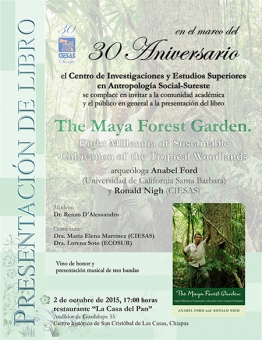
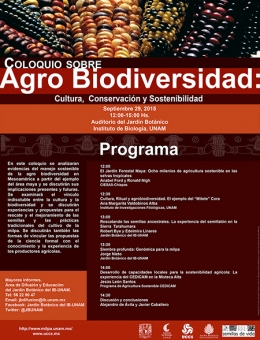
Instituto de Biología, UNAM and the Jardin Botanico hosts the program
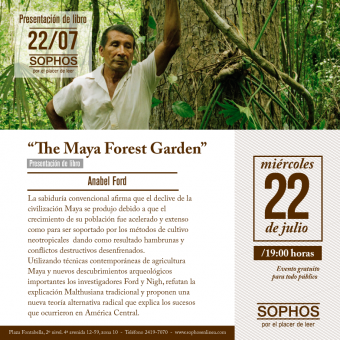
Presentación de libro
“The Maya Forest Garden”
Anabel Ford
Miércoles 22 de julio
19:00 horas
Laguna Blanca School teachers Arturo Flores and Blake Dorfman were in Belize to meet with Anabel Ford Ph.D., director of UC Santa Barbara’s MesoAmerican Research Center, learning far more about the Maya than one would by simply walking the monuments.
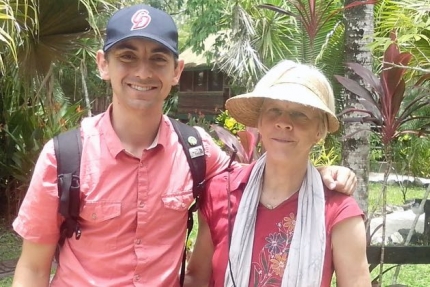
Arriving in Belize after a long series of overnight flights from Santa Barbara, adventurous Laguna Blanca School teachers Blake Dorfman and Arturo Flores met Anabel Ford Ph.D. of UC Santa Barbara’s MesoAmerican Research Center for an introduction to the tropical world of El Pilar in western Belize and the Peten of Guatemala.
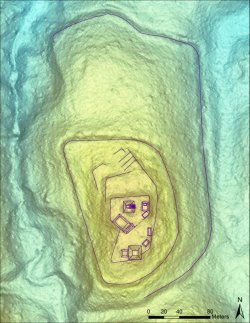
Located within the Belize River region and spread across the imaginary border between Guatemala and Belize, the ancient Maya site of El Pilar features an unusual and mysterious ancient construction complex that has archaeologists jumping for answers.
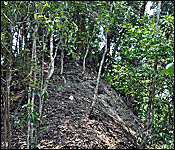
There has been a new and unusual discovery at the El Pilar Maya site located at the Belize- Guatemala border. According to an article from "Popular Archaeology" a structure never observed before was found at the site last year. Archaeologist Anabel Ford from the University of California says that "We discovered a completely new component of the greater site that does not meet with any traditional expectations.
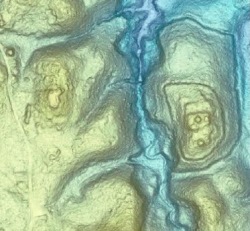
For three decades, archaeologist Anabel Ford has been exploring and studying the ancient Maya site of El Pilar, but until now she has never encountered anything like the ‘Citadel’.
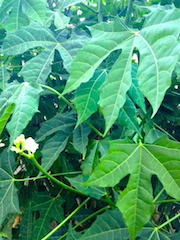
Chaya (Cnidoscolus chayamansa) commonly called Tree Spinach is a very nutritious plant with high protein, iron, calcium, phosphorus, and vitamins. Reaching 3 meters (10 feet high) Chaya has maple-shaped leaves that are delicious steamed or cooked.
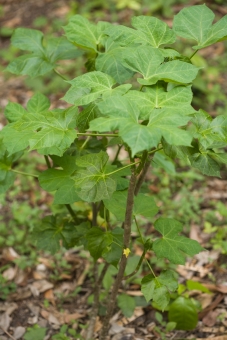
El Pilar will be featured at the Seed Swap on January 25!
7th Annual Santa Barbara Community Seed Swap
Sunday, January 25, 2015
11-3pm, Free
Join us on Thursday, December 11, at 7:30 p.m. at the Sesnon House at Cabrillo College for a talk by Dr. Anabel Ford, “The Ancient Maya and their Forest: A Co-Creative Landscape.” Please note that this event will take place on the second Thursday of the month, December 11.
Monday, October 6, 2014
7:30 PM
Farrand Hall Santa Barbara Natural History Museum
Para el maya antiguo el mono saraguate fue considerado una divinidad.
A study that includes a focus of analyzing Late Classic Maya pottery to determine if it contains traces of ash from the Tierra Blanca Joven eruption.

June 21: Revisiting the Wisdom of Maya Food Forest Gardeners
Ancient farming practices at an archeological site near Belize and Guatemala
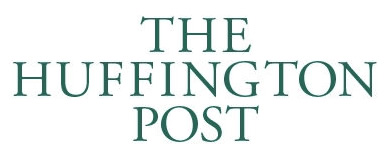
Tough and tiny zircon crystals have helped researchers rule out an enormous volcanic blast as the source of ash used to make Maya pottery, deepening this long-running archaeological mystery.
"While we're a little sad not to have solved the mystery, we're really confident we can say the most likely source quite conclusively isn't a match," said lead author Kevin Coffey, a geology master's student at the University of California, Los Angeles.

Tough and tiny zircon crystals have helped researchers rule out an enormous volcanic blast as the source of ash used to make Maya pottery, deepening this long-running archaeological mystery.
"While we're a little sad not to have solved the mystery, we're really confident we can say the most likely source quite conclusively isn't a match," said lead author Kevin Coffey, a geology master's student at the University of California, Los Angeles.
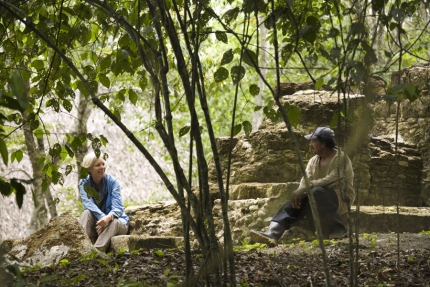
Anabel Ford presented her lecture, The Ancient Maya and Their Forest: A Co-Creative Landscape, at the University of Witwatersrand in Johannesburg, South Africa.
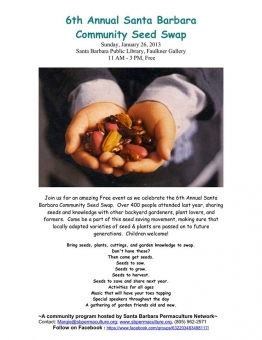
Join Santa Barbara Permaculture Network as it hosts the 6th Annual Santa Barbara Community Seed Swap, with two events.

The Conundrum of Volcanic Ash temper in Ancient Maya Ceramics
Anabel Ford

El Pilar is having its 30th anniversary. Yes, it might be more like 1730 years since it was at its height in the early Classic Period, but the site has been open to the public for 30 years. There will be events and presentations October 25-26, including exhibitions and hikes through the ancient city. Of course Anabel Ford, one of the key founders of the site, will be there to participate in the festivities.
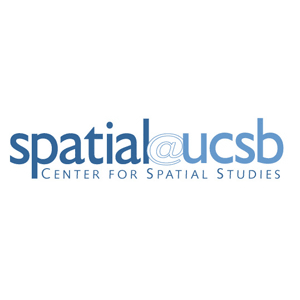

The Maya Forest Garden: Conservation Landscape for the Future
Thursday, October 10th 10:30am-12:30pm
Session 1.06 ~ Hall of Ideas J
Chair: Anabel Ford (Exploring Solutions Past)
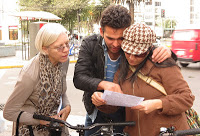
Eduardo Neves, a prominent Brazilian archaeologist and Stéphen Rostain, a French archaeologist organizing the congress in Quito peaked my interest when we met for breakfast at the Society for American Archaeology in Hawaii a

El Encuentro Internacional de Arqueología Amazónica
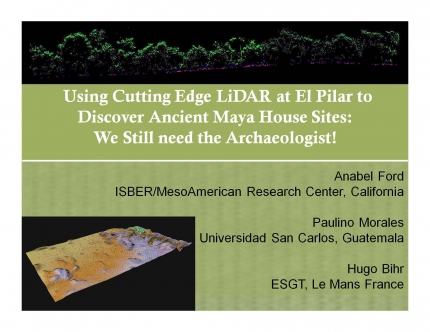
Using Cutting-edge LiDAR Technology to Discover Ancient Maya Households and Settlement Patterns at El Pilar
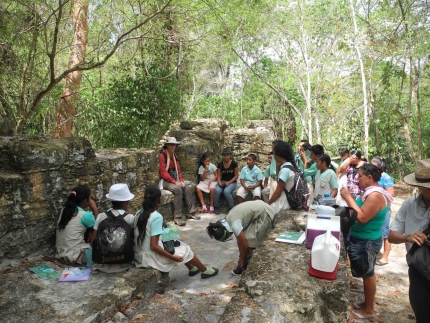
Each May, Belize celebrates Education Week. In the spirit of this national event, the Santa Barbara-based nonprofit, Exploring Solutions Past, has participated by coordinating tours of El Pilar Archaeological Reserve, giving presentations at local schools and leading hands-on garden activities in the villages.

My visit to Beirut was remarkable. It was 36 years ago that I lived there, my father a visiting professor in sociology at the American University of Beirut. My experience living in Beirut and becoming familiar with the Middle East was a pivotal time in my learning. It seems that I found my interests in traditions and ancient life ways while traveling around the region. I gained rudimentary Arabic, enough to shop and bargain.
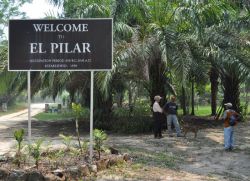
Conservation of our scarce natural and cultural resources is the major issue of the 21st Century. Deforestation is one common threat, and nowhere is this graver than in the tropical forests. Protecting the tropics has become a major concern in past decades, yet it has been with an approach that rests on the western conservation model of removing the human element from the equation. Is this our best option? Perhaps we should explore solutions past.
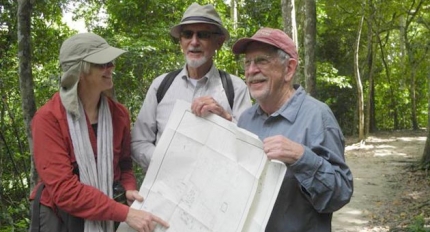
Anabel Ford invites members of the Carr & Hazard 1962 Tikal Report No. 11 revisit Tikal and discuss the challenges presented in the heritage management.
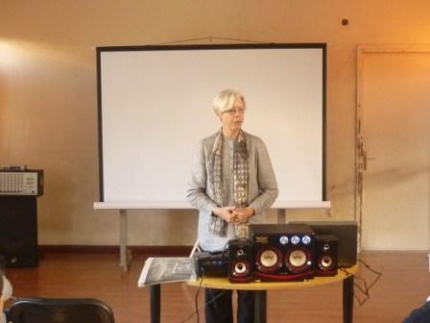
On a professional visit to the Middle East, Dr. Ford participated in the 7th World Archeological Congress in Jordan and gave a lecture at the AUB museum in January 2013 on her work on the El Pilar project. Dr. Ford wanted to spend a day at Ahliah School, her alma mater.
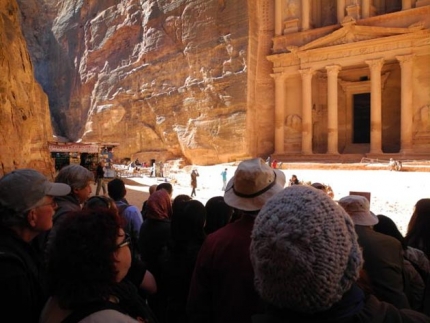
Dr. Ford's Noozhawk article detailing her excursion to Wadi Rum and the ancient city of Petra.
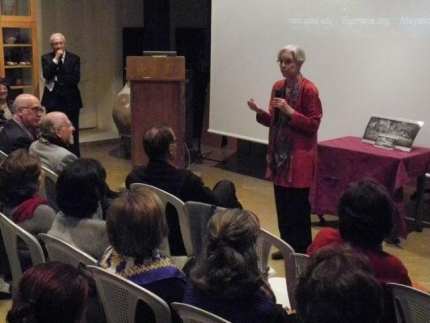
Dr. Anabel Ford gives a lecture at the Archaeological Museum of the American University of Beirut
Mysteries of the Maya Explored
Abstract

Session 4.1F: Consumers, producers, or interactive partners? Toward multivocality in participatory archaeology
Abstract
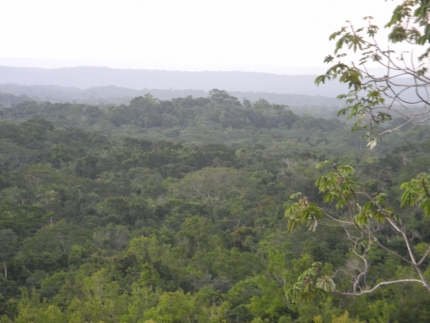
Short piece in Noozhawk by Anabel Ford about the end of the world 2012.
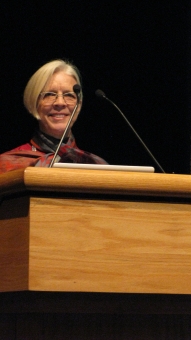
Canadian Museum of Civilization presents Maya Lecture Series
The Ancient Maya and Their Forest: A Co-Creative Landscape
Illustrated talk by Anabel Ford, Director of the MesoAmerican Research Center and Associated Anthropologist at the University of California, Santa Barbara
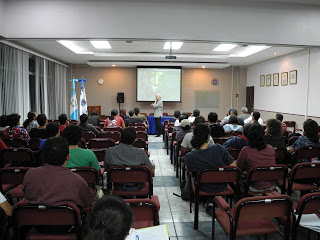
Anabel Ford lectures at the School of History, Universidad de San Carlos de Guatemala, USAC. The University is in Zona 12 and has more than 100,000 students. In the School of History there are about 15,000 students; archaeology and anthropology are among the smallest units. Dr.
An Archaeological View on Maya 2012
Anabel Ford gives an archaeologist's perspective on the Maya Calendar and the public fear surrounding its end in 2012.
Listen to an interview with Archaeologist Anabel Ford on the ISI (It's So Interesting) Network.
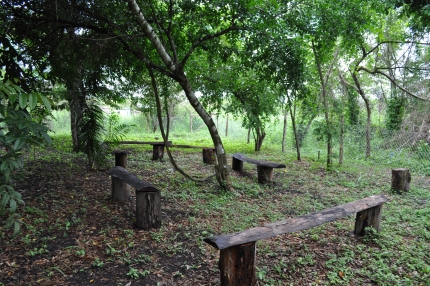
Rolex Awards for Enterprise
Maya Forestry for Future Generations
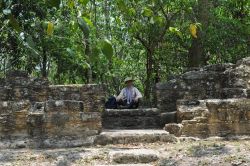
Discoveries at the ancient Maya site of El Pilar may portend a new model for doing archaeology and set a standard for sustainability for the world.
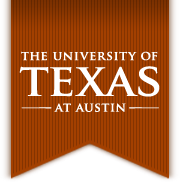
The University of Texas at Austin, Department of Geography and the Environment
presents
The Ancient Maya and their Forest: A Co-Creative Landscape by Dr. Anabel Ford
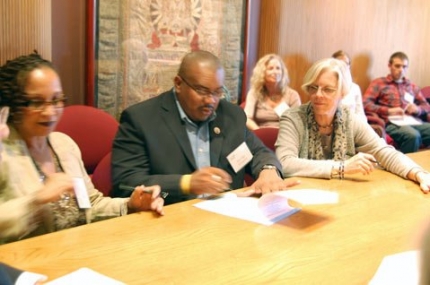
The nearly six-year-old agreement between UCSB and the Central American country of Belize to protect and research the ancient Maya city of El Pilar was officially renewed during a ceremony on Monday.
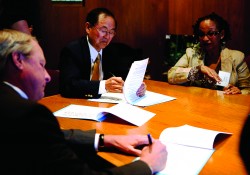
UCSB signed an agreement with Belizean dignitaries yesterday to launch a new collaborative preservation program in the ancient Maya city of El Pilar.
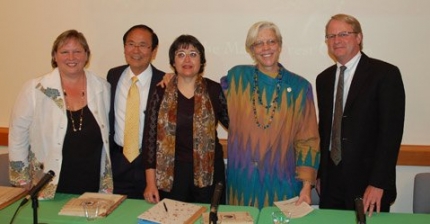
NICH National Institute of Culture and History, Belize

Dignitaries from Belize will travel to Santa Barbara later this month to join UCSB in signing a Memorandum of Understanding to support a collaborative research program at the ancient Maya city of El Pilar and to launch a management program titled “Archaeology Under the Canopy.”
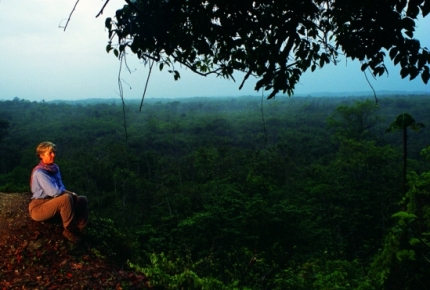
Dignitaries from Belize will travel to Santa Barbara later this month to join UC Santa Barbara in signing a Memorandum of Understanding (MOU) to support a collaborative research program at the ancient Maya city of El Pilar and to launch a management program titled "Archaeology Under the Canopy."
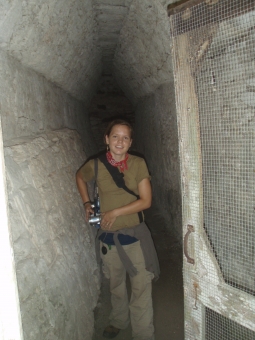
University of Arkansas Examiner
UALR anthropology student, Jessica Perren, is working with a team who is uncovering knowledge in the Mayan city of El Pilar that could potentially supply the world with limitless food sources, save the forests and protect endangered species.
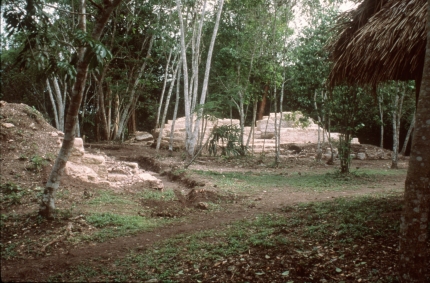
A great article in Pacific Standard Magazine discusses Dr. Anabel Ford and her work at El Pilar.
A leading archaeologist’s take on the pre-European Maya discounts ‘ecocide’ and suggests the people were actually astute stewards of the jungle who could teach us a thing or two. -Arnie Cooper

SYMPOSIUM
Paleodemography: Advances and New Trends in Agricultural Population in MesoAmerica
Anabel Ford—The Sustainable Landscape of the Ancient Maya
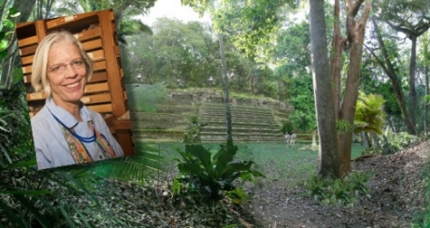
On Tuesday’s “Intents & Purposes” broadcast, Levi Maaia and Tim Grigsby spoke with the director of UCSB’s Meso American Research Center and the recipient of the 2000 Rolex Award for Enterprise, Dr. Anabel Ford.
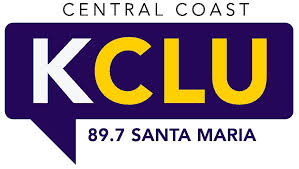
KCLU Radio
UCSB researcher has different theory on archaeological controversy
1/5/2010 10:10am
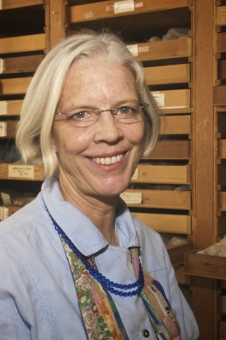
UC Santa Barbara News Release
UCSB Archaeologist Disputes Common Belief About Collapse of Maya
Civilization
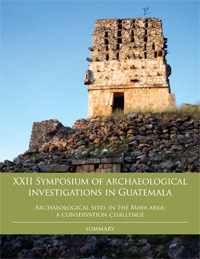
The Getty Conservation Institute
A Maya Predictive Model:
A study on the use of Geographic Information Systems (GIS) in a multi-scale archaeological project
Sébastien Merlet turns in his amazing Masters’ dissertation in Spatial Engineering, focusing on the Maya forest GIS, the predictive model of Maya settlements and our first estimations of population and agricultural land use.
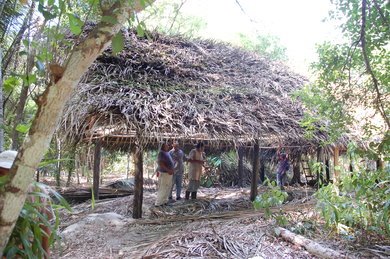
El Pilar Blog
Collaborative reconstruction of the Model Maya House at El Pilar
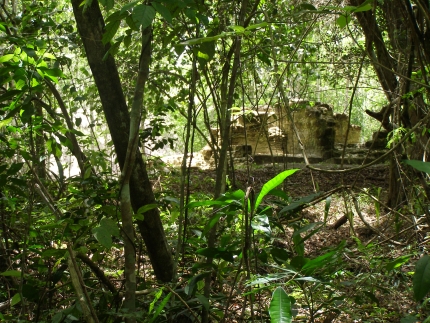
The Guatemala Times
A Guatemala news source highlights the El Pilar Archaeological Reserve for Maya Flora and Fauna and the work done by Dr. Anabel Ford and her team.
PANEL DISCUSSION: The Landscape of the Maya Forest: A Friendly, Local, Community Store
Macduff Everton (Photographer)
Anabel Ford (ISBER, UCSB)
Caroline MacDougall (Herbal Coffee Expert)
Dr. Ford presents at the Society for Applied Anthropology 69th Annual Meeting
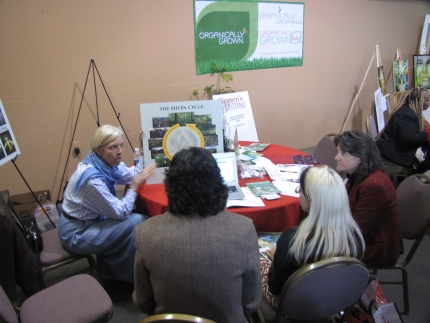
Dr. Anabel Ford speaks on Sustainable Life Lessons of Ancient Maya Cultures hosted on Corwin Pavilion at the University of California, Santa Barbara
Dr. Anabel Ford speaks on The El Pilar Peace Park Initiative for International Women’s Day at the University of Limerick, Limerick, Ireland
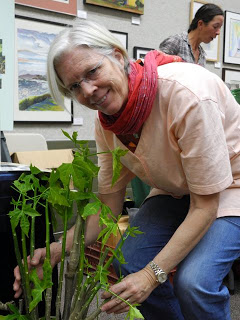
Community Seed Swap (International Seed Swap Day): booth featuring ESP~Maya and Maya Forest Garden. Alameda Park, downtown Santa Barbara
Archaeological Digs Blog
Understanding Maya Land Use at El Pilar
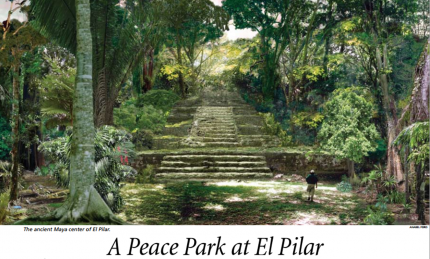
UC Santa Barbara TODAY (Fall 2008) - Page 14 features an article on the progress toward establishing the binational peace park at El Pilar
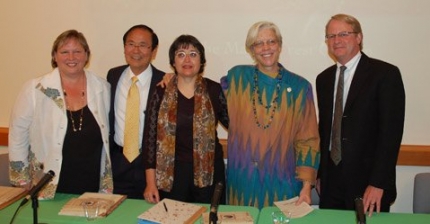
UCSB Archaeologist Anabel Ford Unites Belize and Guatemala with Maya Culture, Sustainable Farming, and Cross-Border Peace
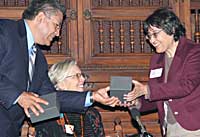
Hector Escobedo, Erick Ponciano and Vilma Fialko, as our honored guests at the Santa Barbara Court Housecosponsored by 1st District Supervisor, Salud Carbajal
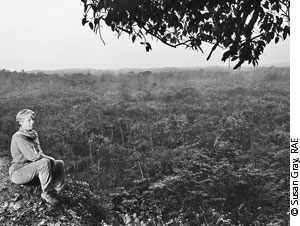
Three dignitaries from Guatemala will travel to Santa Barbara this week to join UC Santa Barbara in signing a Memorandum of Understanding (MOU) that will establish a collaborative research program at the ancient Maya city of El Pilar and launch the El Pilar Peace Park Initiative.
Guatemala - BELIZE. The Mayan City of El Pilar was first mapped out by archeologist Anabel Ford in 1983. Anabel Ford had been working in the Mayan jungle since 1972 as a researcher from University of California, Santa Barbara, UCSB. The Archaeological site El Pilar straddles the borders of Belize and Guatemala.
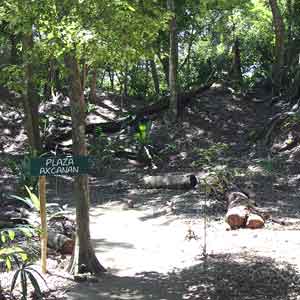
Guatemala. The Mayan City of El Pilar was first mapped out by archeologist Anabel Ford in 1983. Anabel Ford had been working in the Mayan jungle since 1972 as a researcher from University of California, Santa Barbara, UCSB.

Twenty-five years ago, a UCSB explorer discovered ancient Maya ruins straddling the border between Guatemala and Belize. This Wednesday, the site will officially become the first archaeological peace park in the world.
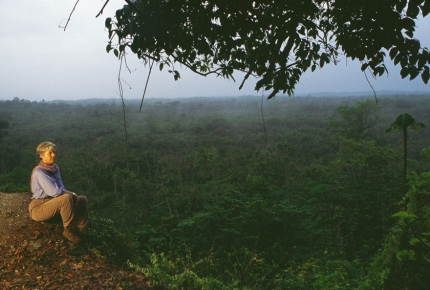
(Santa Barbara, Calif.) – Three dignitaries from Guatemala will travel to Santa Barbara later this month to join UC Santa Barbara in signing a Memorandum of Understanding (MOU) that will establish a collaborative research program at the ancient Maya city of El Pilar and launch the El Pilar Peace Park Initiative.
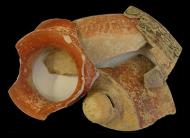
The chemical composition of the volcanic ash used to make Maya pottery could help researchers determine where potters obtained their raw materials.

World Archaeology Congress
Anabel Ford presents her paper on Coloring the Past in the WAC6 session titled Perspectives on the past: archaeology beyond academics
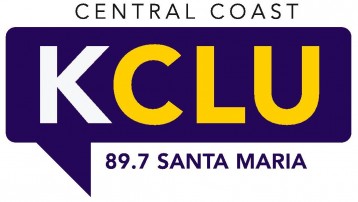
A UC Santa Barbara archeologist who's been studying the ancient Maya people for more than two decades says they might set examples for us today when it comes to environmentalism. KCLU's Lance Orozco has the story.
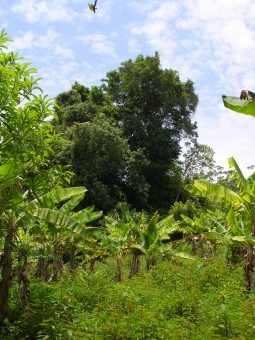
UCSB Archaeologist Anabel Ford Brings the El Pilar Forest Gardeners to Town
Anabel Ford, con base en estudios arqueológicos, explica acerca del origen, migraciones y condiciones
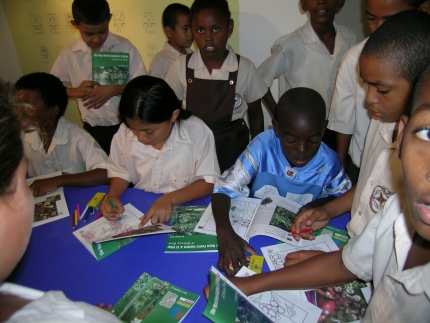
Channel 5, Belize
The ancient Maya site of El Pilar near Bullet Tree Village may not boast the tallest buildings or most valuable artifacts but as a continuing source of education for Belizeans the place is definitely on top. News Five Janelle Chanona reports.
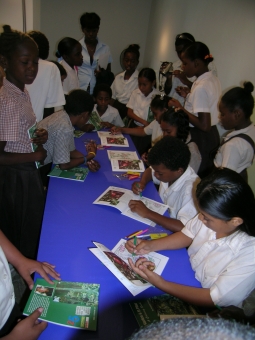
Channel 7 News, Belize
NICH Launches Maya Forest Garden Coloring Book
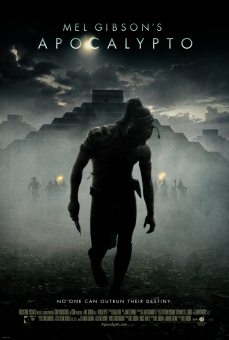
UCSB’s Maya Expert Anabel Ford Digests Mel Gibson’s New Flick
Santa Barbara Independent
On a need-to-know basis as a Maya archaeologist, I joined the full theater-opening weekend in Santa Barbara of Apocalypto, directed by Mel Gibson. What I found was…
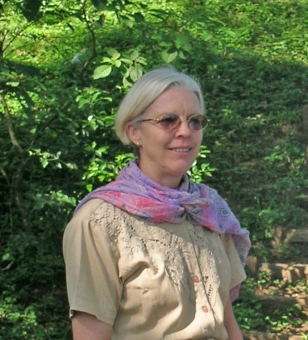
Santa Barbara Independent
The view of the Maya as ecologically self-destructive is entrenched. Most recently, the geographer Jared Diamond used it in Collapse, his bestselling book about the various ways societies bring about their own disintegration. But Ford, who has spent the last 20 years studying the Maya, remains unconvinced. The bedrock of her skepticism—and her article—is a simple fact, but one she believes holds profound implications. It is, namely, that 90 percent of the modern Maya forest is human-influenced, or anthropogenic.
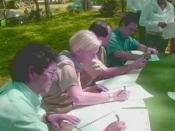
It's an important Mayan site, bordering Belize and Guatemala, but, sadly, every time we hear about El Pilar, the news is about some kind of illegal activity in the border area, usually violent armed assaults of nearby residents or tourists by cross border bandits. But all that is about to change because Pilar is coming under a tri-partite management regime.
The annual celebration of UC Santa Barbara's research and conservation activities at the El Pilar Maya cultural site in Belize and Guatemala will be held Saturday, October 15, from 2 to 7 p.m. at the Sedgwick Reserve in Santa Ynez.
The annual celebration of UC Santa Barbara's research and conservation activities at the El Pilar Maya cultural site in Belize and Guatemala will be held Saturday, October 15, from 2 to 7 p.m. at the Sedgwick Reserve in Santa Ynez.
For more than 1,700 years, the Maya center of El Pilar thrived beneath the lush canopy of the Maya forest along the border of Guatemala and Belize.
Today, however, the ancient city is an abandoned shambles.
And the great forest that sustained its people for so many centuries is at risk of being cut and cleared.
Neue Jdeenfiirden Tempelto11risn111.r: Die Maya-Stiitte El Pilar auf der Ha fbinsel Ymwtli11 I Vim
Since discovering the El Pilar Maya site in Belize and Guatemala in 1983, UCSB archaeologist Anabel Ford has been dedicated to making the culturally rich area a unique blend of research, preservation, community cooperation, and economic development.
The annual UCSB Alumni Association Awards Banquet on May 31 at Corwin Pavilion will honor six people, including two current and two former faculty members.
Research archaeologist Anabel Ford, '74 and Ph.D.'81, will receive the Distinguished Alumni Award.
Anabel Ford, a research archaeologist at the University of California, Santa Barbara, will celebrate 10 years of research and conservation at the El Pilar Maya cultural site in Belize and Guatemala with a public lecture and reception Saturday, Sept. 21 from 5 to 9 p.m. at UCSB's Multicultural Center.
Ford, who discovered the remains of the ancient city in 1982 and began uncovering it in 1992, will speak about her unique vision for El Pilar and about the binational effort to use the site in ways that enrich the future as well as reveal the past.
University of California, Santa Barbara News Release
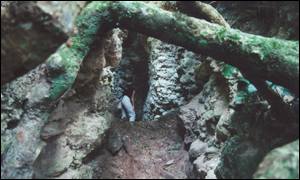
BBC News article by Jeremy McDermott, in the jungles of Central America.
Satellite photos have shown that there are up to 4,000 Mayan sites deep in the jungles that archaeologists have not yet found.
But the likelihood is that looters already have, as Mayan jade figurines fetch tens of thousands of dollars on the international art market

Archaeologist and anthropologist Anabel Ford has spent four decades studying the Maya civilization, principally at the vast and ancient city of El Pilar, which she discovered on the border of today’s Belize and Guatemala.
Maya culture holds lessons for the 21st-century world and its agricultural challenges, according to Dr Anabel Ford of the University of California, Santa Barbara, where she is Director of the MesoAmerican Research Center and President of the non-profit organization Exploring Solutions Past.
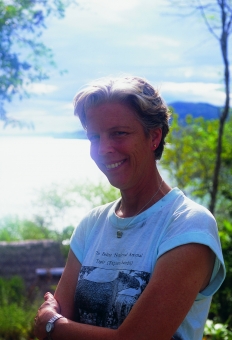
Anabel Ford is given the Rolex Award for Enterprise
For over 20 years, American archaeologist and Maya specialist Anabel Ford has run a wide-ranging research and conservation programme in the ancient Mayan city of El Pilar, on the border between Belize and Guatemala.
From The Science Blog
The spectacular Maya temples of Mexico and Central America are among the most stunning relics of the world's past civilizations and are indicative of an ancient people sophisticated in religion, politics and science.

